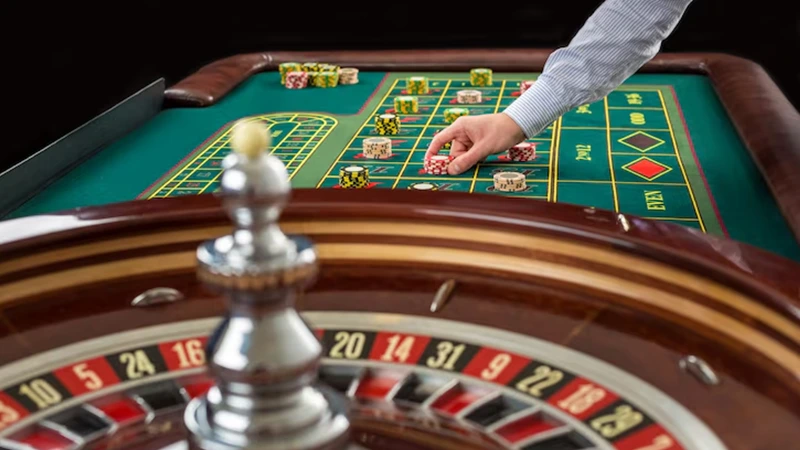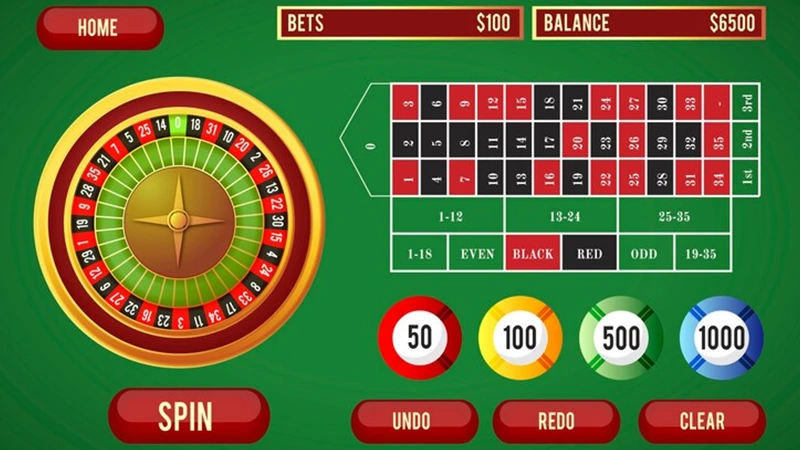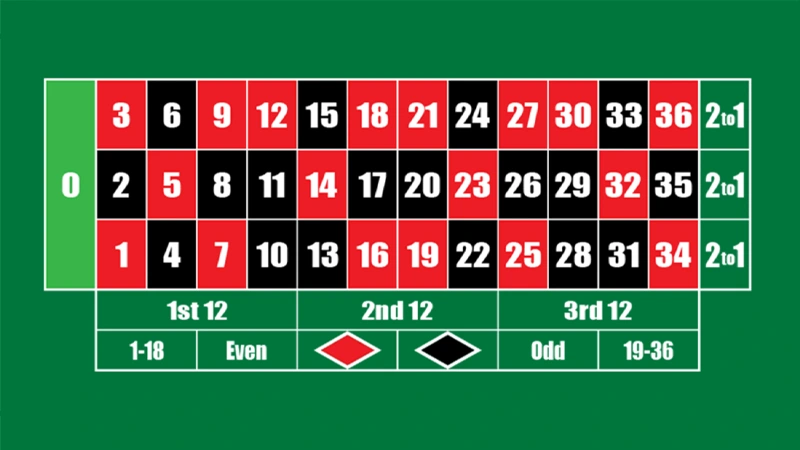Roulette stands out as one of the most iconic and widely loved casino games worldwide. Its unique blend of chance and strategic betting attracts both beginners and seasoned gamblers alike. The spinning wheel and bouncing ball create a thrilling experience that keeps players on the edge of their seats, eager to predict where the ball will land. While luck plays a significant role in every spin, many players seek to improve their odds by applying proven betting strategies.
To help you enhance your gameplay and potentially increase your winnings, this article dives into five of the most famous roulette betting strategies: Martingale, Fibonacci, Labouchère, Paroli, and Beyond. Each method offers a distinct approach to managing bets and bankroll, suited to different playing styles and risk levels.
Join us at 91 Club and discover how mastering these popular roulette strategies can take your gaming to the next level!
🎡 Basic Understanding of Roulette
Before exploring the famous roulette strategies, it’s essential to grasp how the game itself works. At its core, roulette is a game of chance where players place bets on a table that represents various numbers and betting options. Once all bets are placed, the dealer spins the wheel in one direction and sends a small ball rolling in the opposite direction. When the ball eventually lands in a numbered pocket, the winning bets are determined based on where it falls.

Roulette offers a variety of betting options to suit different playing styles. Players can bet on single numbers, combinations of numbers, or broader categories such as even or odd numbers, red or black pockets, or high (19–36) or low (1–18) ranges. Each type of bet comes with its own payout and probability, allowing for both low-risk and high-reward play styles.
One important concept in roulette is the house edge—the built-in advantage the casino holds over players. In European roulette, which features a single zero (0), the house edge is typically around 2.7%. In contrast, American roulette includes an extra double zero (00), raising the house edge to about 5.26%. Understanding these odds helps players make more informed betting choices and better appreciate how each strategy performs in practice.
🧠 5 Famous Roulette Strategies
1. Martingale – The Doubling Strategy
The Martingale strategy is arguably the most well-known and widely used betting system in roulette, especially among beginners due to its straightforward approach. The core principle is simple: you double your bet after every loss. The idea behind this is that when you eventually win, you not only recover all your previous losses but also secure a profit equal to your original stake.
Let’s take a practical example. Suppose you begin with a $10 bet on an even-money option such as red/black or odd/even. If you lose that round, your next bet would be $20. If you lose again, you would then bet $40. When you finally win—say, on the third round—you’ll receive $80 in winnings. Subtracting the total amount you’ve wagered ($10 + $20 + $40 = $70), you end up with a $10 profit, which is equal to your original bet.
Advantages of the Martingale strategy include its ease of use and compatibility with even-money bets, which have nearly 50% odds of winning. Many players find comfort in the idea that a single win can offset a series of losses, making it psychologically appealing for short-term play.

However, the disadvantages are significant and must be carefully considered. This method requires a large bankroll to withstand long losing streaks, which are more common than many players expect. Moreover, most online and physical casinos have table limits that can quickly prevent you from doubling your bet after several consecutive losses. This exposes the biggest risk of Martingale: if the losing streak is long enough, you may run out of funds or hit the betting cap before you can recover, resulting in substantial losses.
Important note: While Martingale can help manage bankroll in the short term and provide small, consistent wins, it does not influence the actual probability of winning. The odds of each roulette spin remain unchanged regardless of your previous results. As such, this strategy should be used with caution and always within the boundaries of a responsible gaming budget.
Example:
- Initial bet: $10.
- Lose round 1: Bet $20 next.
- Lose round 2: Bet $40 next.
- Win round 3: Profit = $10.
Note: This strategy doesn’t change your chances of winning but helps manage your bankroll.
2. Fibonacci – The Golden Sequence
The Fibonacci strategy uses a famous number sequence—0, 1, 1, 2, 3, 5, 8, 13…—to guide betting amounts after losses. Each bet is the sum of the two previous ones, helping players recover gradually. For example, if you lose a $1 bet, your next wagers would follow the sequence: $1, $2, $3, $5, and so on. When you win, you move two steps back in the sequence to reduce your stake and slowly recover previous losses.
Fibonacci’s key advantage is better risk control—bets increase more slowly than in systems like Martingale, making it easier to manage for players with limited bankrolls. However, prolonged losing streaks can still lead to large bets, and like all strategies, it doesn’t change the odds or eliminate the house edge. Overall, it’s a steady, math-based approach ideal for patient players who prefer structure over high-risk tactics.

Example:
- Initial bet: $10.
- Lose round 1: Bet $10 next.
- Lose round 2: Bet $20 next.
- Win round 3: Profit = $10.
Note: This strategy helps avoid losing your bankroll too quickly.
3. Labouchère – The Cancellation System
The Labouchère system, also called the “Cancellation” or “Split Martingale,” involves setting a profit goal and dividing it into a sequence of numbers. You bet the sum of the first and last numbers in the sequence. After a win, you cross off those numbers; after a loss, you add the lost amount to the end. This continues until all numbers are canceled, meaning your target profit is achieved. The strategy’s strength lies in its flexibility and structure, allowing players to customize their risk and work toward a specific goal. It’s especially appealing to those who enjoy detailed planning and methodical gameplay, and platforms like 91 Club make it easy to keep track of sequences with clear interfaces.

However, Labouchère is more complex than systems like Martingale or Paroli and requires precise tracking to avoid errors. Long losing streaks can cause the sequence to grow, leading to large bet sizes that strain your bankroll. While it avoids doubling bets aggressively, the gradual increase can still be risky over time. It’s best suited for experienced or disciplined players who are confident in managing multi-step strategies under pressure.
Example:
- Target profit: $100.
- Sequence: 10, 20, 30, 40.
- Initial bet: 10 + 40 = $50.
Note: Patience and discipline are necessary when using this method.
4. Paroli – The Positive Progression Strategy
The Paroli strategy is one of the safest and most beginner-friendly roulette systems. Unlike loss-recovery methods like Martingale or Labouchère, Paroli focuses on maximizing winning streaks by doubling your bet after each win—a “positive progression” approach that builds profit without risking your bankroll.
You begin with a base bet. After each win, you double your stake. Once you hit three wins in a row (or a target you set), you return to the starting bet. If you lose at any point, you reset immediately. For example, if your base bet is $5, and you win two rounds, your third bet is $20. Win again, and you collect profit and restart. A loss at any time takes you back to $5.

Paroli’s major advantage is its low risk—you only raise bets when ahead, making it ideal for cautious players. It’s also easy to follow, requiring minimal tracking. However, the downside is that profits rely on catching a streak. If wins are scattered, gains stay modest.
That said, for players seeking safer strategies, especially on trusted platforms like 91 Club, Paroli is a great choice to combine entertainment with responsible bankroll management.
Example:
- Initial bet: $10.
- Win round 1: Bet $20 next.
- Win round 2: Bet $40 next.
- Lose round 3: Profit = $10.
Note: Set clear stop points to avoid losing all profits.
5. Beyond – Advanced & Extended Strategies
For seasoned players seeking a more refined edge, advanced systems such as the James Bond strategy, D’Alembert, or even predictive tools like roulette software come into play. These methods often combine mathematical models, structured progressions, or wheel bias analysis to improve bet accuracy. When used correctly, they can increase winning potential significantly and offer a more strategic, analytical approach to the game. However, their complexity requires a solid understanding of roulette mechanics and plenty of practice. Misapplying these strategies or using them without a clear system can lead to costly mistakes. As such, these techniques are best reserved for players with experience, discipline, and the patience to master more intricate systems.
Example:
- James Bond strategy: Bet $140 on numbers 19-36, $50 on 13-18, and $10 on zero.
Note: Practice with free tables before betting real money.
🧮 Comparing the Strategies
| Strategy | Progression Type | Risk | Suitable For |
| Martingale | Negative | High | Players with large bankroll |
| Fibonacci | Negative | Medium | Budget-conscious players |
| Labouchère | Mixed | Medium | Strategic players |
| Paroli | Positive | Low | Conservative players |
| Beyond | Complex | High | Experienced players |
💡 Tips for Effective Application
- Bankroll management: Set and stick to your budget.
- Know when to stop: Quit after hitting goals or during long losing streaks.
- Practice first: Try strategies on free tables before playing for real.
- Combine strategies: Mix different strategies to optimize results.
Each Roulette strategy has its strengths and weaknesses. Choosing the right one depends on your play style, bankroll, and risk tolerance. Test and find the best fit for you.
❓ FAQ
- Which strategy is easiest for beginners?
Paroli is the simplest with low risk. - Which strategy has the lowest risk?
Paroli and Fibonacci, if used correctly. - Is there any strategy that guarantees a win?
No, due to the game’s randomness. - How to manage bankroll effectively in Roulette?
Set a budget before playing and follow it strictly.

